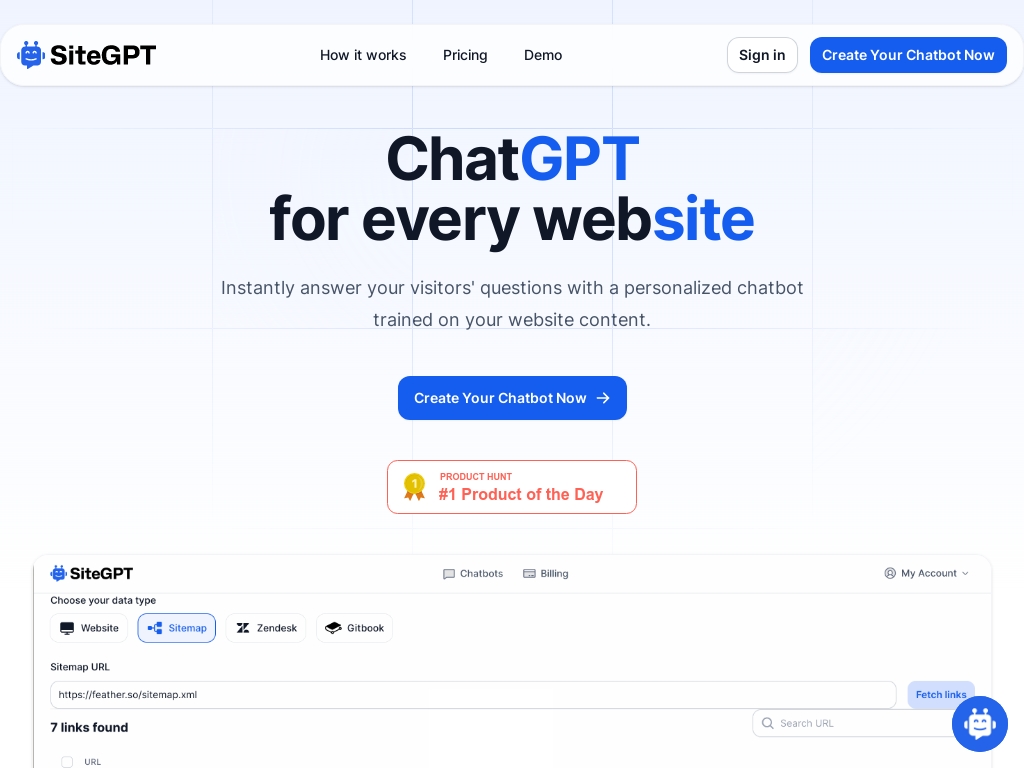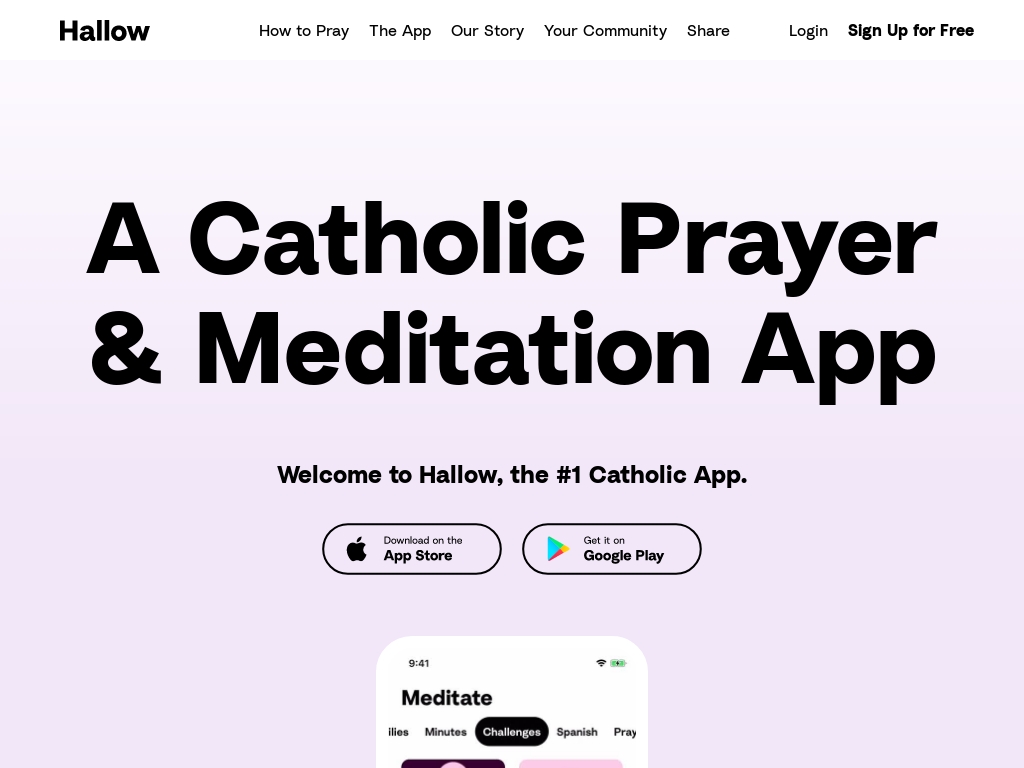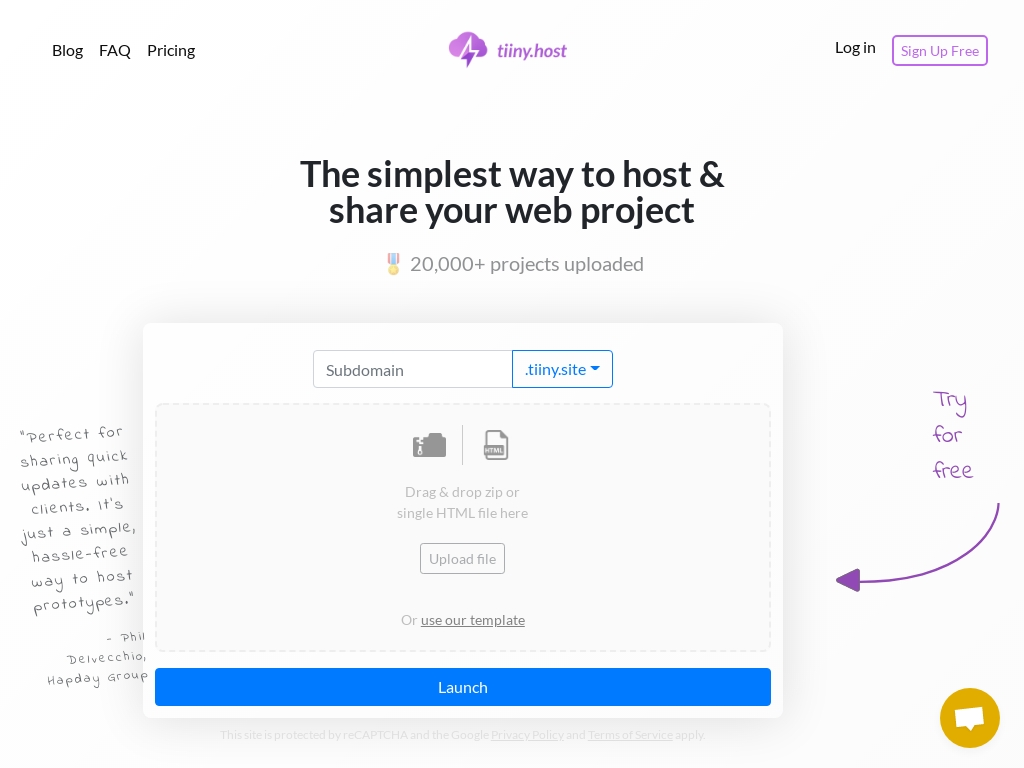
How Luca Restagno Grew Userdesk SaaS to $1K MRR in 12 Months
Who is Luca Restagno?
Luca Restagno, the founder of Userdesk, is a software engineer from Italy with over a decade of experience; he's been involved in indie hacking, launching and selling multiple SaaS products since deciding to create his own ventures in 2019.
What problem does Userdesk solve?
Userdesk solves the problem of small businesses overwhelmed by repetitive customer inquiries by using AI chatbots to instantly provide answers from existing resources, saving time and focusing on more complex issues.
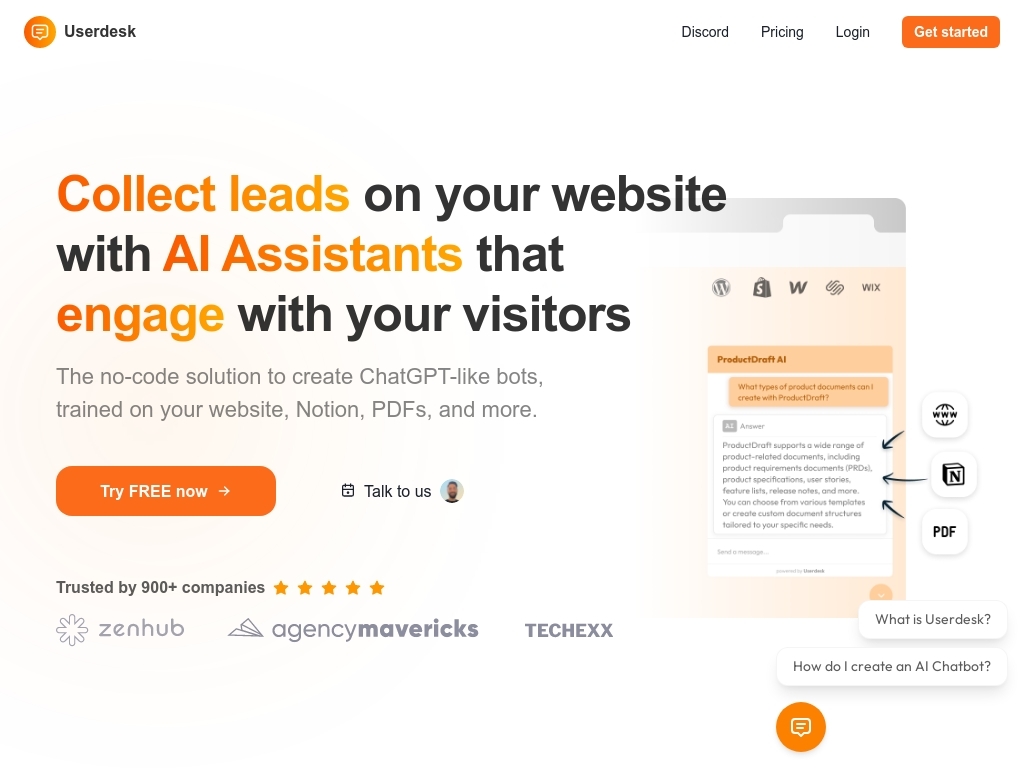
How did Luca come up with the idea for Userdesk?
Luca Restagno came up with the idea for Userdesk from his own experiences as a solo founder dealing with customer support. As someone who has launched multiple SaaS products, Luca noticed a common problem: small business owners and solo entrepreneurs often spend a lot of time answering repetitive customer queries, which are usually already addressed in their existing content, like FAQs and guides on their websites. This observation sparked the idea for an AI-powered customer service chatbot that leverages a business's existing content to efficiently handle such inquiries.
To validate the concept, Luca tested the market through a pre-launch offering, where he successfully sold multiple licenses with just a tweet. This initial validation gave him the confidence to pursue the idea further. Seeking to ensure Userdesk addressed real pain points, he actively engaged with early users and refined the product based on feedback. Luca learned the importance of solving a problem he was familiar with, as it allowed him to design a solution that closely resonated with potential customers.
Despite challenges such as competition and the need to clearly define a target audience, Luca navigated the ideation phase by relying on his technical background and leveraging his audience on platforms like Twitter. A key takeaway from this experience was the significance of having a strong founder-product fit; he realized that working on projects that aligned with his own expertise and values would lead to greater satisfaction and success.
How did Luca Restagno build the initial version of Userdesk?
Luca Restagno built Userdesk by leveraging his experience as a software engineer and previous indie hacking projects. He initiated the process with a pre-launch offer for a $69 lifetime deal, which sold 30 licenses in 24 hours, effectively validating the concept before any development began. Userdesk was constructed using a tech stack of React and NextJS hosted on Vercel, with ChakraUI as the UI component library, and AWS for background jobs. The development process was facilitated by reusing this tech stack from his previous projects, which allowed for high productivity and speed. The initial product took approximately three months to develop and launch, with challenges primarily stemming from positioning and market fit within an already competitive AI chatbot landscape.
How did Luca launch Userdesk and get initial traction?
Twitter Audience Engagement
Luca Restagno, the founder of Userdesk, leveraged his existing Twitter profile where he had an audience of around 13k followers. He actively engaged this audience by talking about Userdesk daily. This pre-launch approach included offering a lifetime deal for $69 without showing the product, which led to the sale of approximately 30 licenses in just 24 hours from a single tweet.
Why it worked: Luca had already established a reputation and trust with his Twitter audience. By engaging directly with them and offering an exclusive deal, he tapped into their loyalty and interest, leading to immediate sales and feedback.
Discord Community
After the initial pre-launch, Luca created a Discord community for Userdesk users. This community acted as a direct communication channel to engage with new users, allowing Luca to gather feedback, make announcements, and encourage discussions around the product.
Why it worked: Building a community provided Userdesk with a dedicated space where users could connect, share experiences, and stay updated on new features. This strategy helped in retaining interest and building a strong user base around the product.
AI Directories
To drive traffic and gain visibility for Userdesk, Luca utilized AI directories. These platforms are popular among AI enthusiasts and played a significant role in attracting visitors to the Userdesk website.
Why it worked: AI directories are niche platforms that attract users interested in AI products. By listing Userdesk on these directories, Luca was able to reach an audience that was already interested in AI solutions, thereby increasing traffic and domain authority for his website.
What was the growth strategy for Userdesk and how did they scale?
Userdesk effectively used Twitter as its main distribution channel. The founder, Luca, built an audience of around 13,000 followers and regularly talked about the product. Before the official product launch, he offered a lifetime deal through a tweet, selling about 30 licenses in just 24 hours. This direct engagement provided validation and initial traction. However, it also highlighted a potential pitfall—impulsive purchases from followers may not result in long-term engagement or usage.
Why it worked: Luca's Twitter presence helped in gathering an initial user base quickly. Being active on the platform allowed for real-time communication and marketing, crucial for drumming up interest and sales. The audience he grew there was already interested in his work, leading to high engagement with minimal marketing spend.
AI Directories
Userdesk attracted attention by being listed in AI directories. These platforms are frequented by AI enthusiasts looking for new products, thus serving as a valuable source of targeted traffic. The listings improved the product's visibility and contributed positively to the website's domain rating.
Why it worked: AI directories cater specifically to Userdesk's target audience. Being featured in these directories placed Userdesk in front of potential customers who are already interested in AI solutions, making it an effective channel for quality leads.
Discord Community
Luca created a Discord community for Userdesk users, inviting new subscribers to join. This community acted as a direct communication channel for updates and discussions. It helped in building a loyal user base and provided an avenue for gathering feedback and fostering engagement among users.
Why it worked: Discord allowed for cultivating a closer relationship with users. The platform facilitated a sense of community and loyalty, which can increase user retention and provide insights into customer needs and preferences.
LinkedIn Ads and Outreach
While experimentation is ongoing, LinkedIn emerged as a promising channel for Userdesk. Its professional network aligns with the target audience—businesses looking for customer support solutions. Luca explored LinkedIn Ads and cold outreach to generate leads.
Why it worked: LinkedIn serves as a suitable platform for B2B products like Userdesk. The professional context of the platform matched well with the product, offering the potential to reach high-quality leads directly within the target demographic.
What's the pricing strategy for Userdesk?
Userdesk uses a subscription model with plans starting at $19 per month, offering a free trial to attract users.
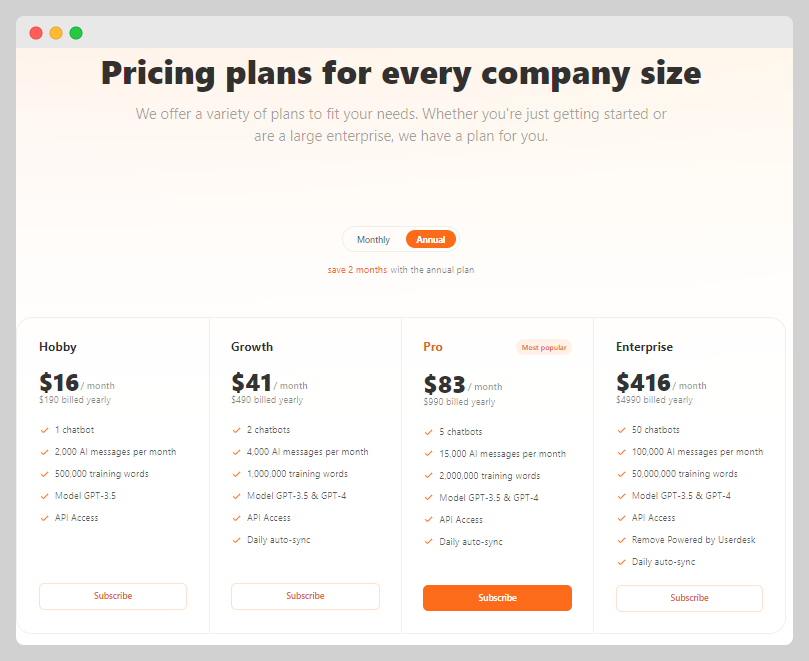
What were the biggest lessons learned from building Userdesk?
- Avoid Platform Dependency: Luca learned the hard way that relying heavily on a single platform can be risky, as seen when Twitter changed its API pricing. Diversifying your product's dependencies can safeguard against sudden external changes.
- Niche Targeting Matters: Userdesk struggled due to unclear targeting, which made it difficult to market effectively. Identifying and focusing on a specific audience can drastically improve your product's chances of success.
- Validate Early with Payments: Luca emphasizes the importance of validating your idea through actual sales. Offering a pre-launch deal allowed him to gauge interest and committed customers early, giving a more accurate validation of the product's potential.
- Lessons from Competition: Entering a crowded space without clear differentiation can be challenging. Userdesk faced stiff competition, and one lesson learned was ensuring your product offers unique value right from the start.
- Importance of Founder-Product Fit: Luca realized that working on projects that align with personal interests and strengths, like his later focus on Shipped.club, can lead to more fulfilling and potentially successful ventures.
Userdesk Acquisition: How much did Userdesk sell for and what was the acquisition price?
In March 2024, Userdesk, an AI chatbot platform, was sold by Luca Restagno after being launched in June 2023. The specifics of the acquisition, including the buyer and sale price, were not disclosed.
Discover Similar Business Ideas Like Userdesk
|
|
Idea
|
Revenue
|
|---|---|---|
|
PDFShift
|
HTML-to-PDF conversion API service.
|
$8.5K
monthly
|
|
SiteGPT
|
AI chatbot trained on your website content.
|
$15K
monthly
|
|
Hallow
|
"Catholic prayer and meditation app fostering faith growth."
|
$278K
monthly
|
|
tiiny.host
|
Static website hosting made simple for everyone.
|
$15K
monthly
|
|
Studio Wombat
|
WooCommerce plugin developer for enhanced e-commerce features.
|
$15K
monthly
|
|
Treendly
|
Trend-spotting platform for untapped market insights.
|
$1K
monthly
|
|
ScreenshotOne
|
API for capturing website screenshots easily.
|
$2.2K
monthly
|
More about Userdesk:
Who is the owner of Userdesk?
Luca Restagno is the founder of Userdesk.
When did Luca Restagno start Userdesk?
2023
What is Luca Restagno's net worth?
Luca Restagno's business makes an average of $1K/month.
How much money has Luca Restagno made from Userdesk?
Luca Restagno started the business in 2023, and currently makes an average of $12K/year.

Download the report and join our email newsletter packed with business ideas and money-making opportunities, backed by real-life case studies.

Download the report and join our email newsletter packed with business ideas and money-making opportunities, backed by real-life case studies.

Download the report and join our email newsletter packed with business ideas and money-making opportunities, backed by real-life case studies.

Download the report and join our email newsletter packed with business ideas and money-making opportunities, backed by real-life case studies.

Download the report and join our email newsletter packed with business ideas and money-making opportunities, backed by real-life case studies.

Download the report and join our email newsletter packed with business ideas and money-making opportunities, backed by real-life case studies.

Download the report and join our email newsletter packed with business ideas and money-making opportunities, backed by real-life case studies.

Download the report and join our email newsletter packed with business ideas and money-making opportunities, backed by real-life case studies.

